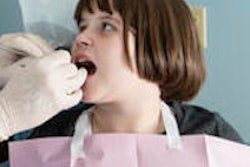
A report issued by the Canadian Institute for Health Information (CIHI) has revealed an alarming statistic regarding early childhood caries (ECC): Each year in Canada, more than 19,000 day (or outpatient) surgeries are performed on children younger than age 6 to treat them.
"Day surgery for ECC occurred about once for every 100 children age 1 to younger than 5 during the two-year period 2010-2011 to 2011-2012," the report noted. "These operations to fill or treat cavities and extract teeth were almost always conducted under general anesthesia (99.6%)."
The risks associated with sedation are significant and highly avoidable with better oral health maintenance. The report is intended to draw attention to the long-term and frequently severe consequences of poor oral health in children.
CIHI, a nonprofit, independent organization created by Canadian federal, provincial, and territorial governments, collects and analyzes healthcare information and disperses it to the public. The current report specifically addressed children who require surgery under general anesthesia to ascertain how often such surgeries occur and their impact on the healthcare system.
Information compiled in the report was sourced from CIHI's Discharge Abstract Database and National Ambulatory Care Reporting System. Quebec did not participate; cases associated with dental trauma were excluded. The researchers focused on two time frames: fiscal years 2010-2011 and 2011-2012.
During the total two-year study period, 31% of all outpatient surgeries performed on children older than 1 and younger than 5 were for ECC, more than tonsillectomy/adenoidectomy (11%) and myringotomy with tubes (19%) combined. The remaining procedures were for "other" reasons (39%).
During that time period, 12.5 outpatient surgery operations for ECC were performed per 1,000 children in this age group. That varied considerably, depending on the health region; the rates were 132.9 per 1,000 in Mamawetan Churchill River Regional Health Authority and 227.4 in Athabasca Health Authority, for example.
Patterns of oral care need emerged as the organization compared their data to census projections. Neighborhoods where more than one-third of the population self-identifies with an aboriginal group had rates of ECC surgeries that were 8.6 times higher than those with low aboriginal populations.
Lower-income populations had much higher rates as well: Rates in the lowest-income neighborhoods had rates that were 3.9 times higher than those in the highest areas (27.2 per 1,000 and 6.9 per 1,000, respectively). Dental insurance is a factor. Half of lower-income Canadians lack coverage compared with the 32% national average. Overall, 62% of Canadians have private insurance and 6% have public insurance.
The study researchers found a stark disparity between rural and urban rates, with 31.7 ECC surgeries per 1,000 children in rural areas and 10.1 per 1,000 in urban zones.
The burden on Canada's public health system is considerable, the report authors explained, with annual cost of $21.2 million Canadian ($20.3 million U.S). "This is a fraction of the total cost of care for ECC because it excludes costs associated with care providers, such as dental surgeons and anesthesiologists, as well as costs associated with travel to care," the authors explained. For example, 22% of ECC day surgeries required a driving time of two or more hours for care.
Anesthesia costs varied in the provinces where data were available. The fee-for-service ranged from $240 in Manitoba to $361 in Saskatchewan.
The outpatient surgery rates calculated in the study represent only a small portion of the actual prevalence of ECC, the researchers concluded. "Reported here are only operations for those children cared for by health authorities," they wrote. "Uncounted are the many children receiving care in the community or waiting for care."



















